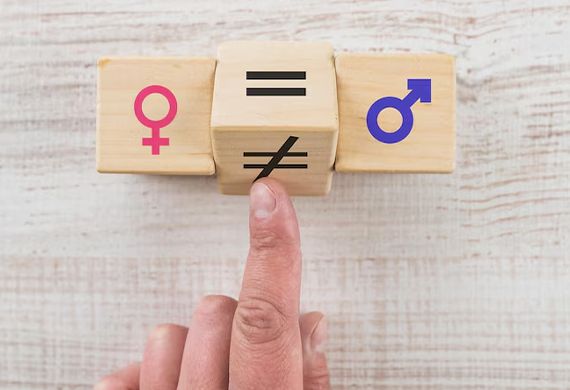
Global Gender Gap Narrows to 68.8%, But Full Equality 123 Years Away: WEF Report 2025
By: WE Staff
The global gender gap has shrunk to 68.8 percent, the largest annual progress since the COVID-19 pandemic, according to the World Economic Forum's Global Gender Gap Report 2025, which was made public on Thursday. Full gender parity is still 123 years away, though, if current trends continue. With a parity score of 64.1 percent, India is now among the lowest-ranked countries in South Asia, having dropped two spots to 131 out of 148.
Even though women have more education than men worldwide, they are still underrepresented in leadership positions; despite making up 41.2 percent of the workforce, only 28.8 percent of senior positions are held by women. Less than one-third of women, even those with the highest levels of education, hold senior management positions.
Sue Duke, Global Head of Public Policy at LinkedIn, cautioned that the persistent drop in women's leadership involvement is concerning, particularly in light of changing economic conditions and the development of artificial intelligence.
The study looks at gender disparities in four key areas: political empowerment, health and survival, educational attainment, and economic participation and opportunity. With inputs from organizations like the ILO, UNESCO, WHO, World Bank, and LinkedIn, it pulls data from 148 economies, which accounts for over two-thirds of the global population.
According to the report, women are more likely than men to take career breaks, frequently for caregiving responsibilities, highlighting the fact that career paths are becoming less linear. These pauses have long-term negative effects on career advancement. Technological disruptions and global economic fragmentation continue to pose risks, particularly for women in fragile economies.
Despite the fact that many women in lower-income countries are able to find formal work, they are still vulnerable to shocks such as disruptions in trade, which can have a long-term impact on their quality of life. North America leads the region in gender parity with a score of 75.8 percent, followed by Europe with a score of 75.1 percent, largely due to greater political empowerment.
Latin America and the Caribbean have advanced at the fastest rate since 2006, while South Asia trails behind with a score of 64.6 percent, led by Bangladesh with a parity rate of 77.5 percent. Sub-Saharan Africa and Central Asia also showed encouraging trends.
With 92.6 percent parity, Iceland has maintained its position as the top country in the world rankings for 16 years running. Finland, Norway, the United Kingdom, and New Zealand are next in line. Every one of the top ten countries has surpassed the 80 percent threshold, with European nations continuing to lead since 2006.
The World Economic Forum's Global Gender Parity Sprint to 2030, which aims to accelerate policy reforms and promote inclusive economic growth, is supported by the report. Achieving gender equality is not only a social necessity but also a calculated step toward more robust and resilient economies, stressed WEF Managing Director Saadia Zahidi.


.jpg)



